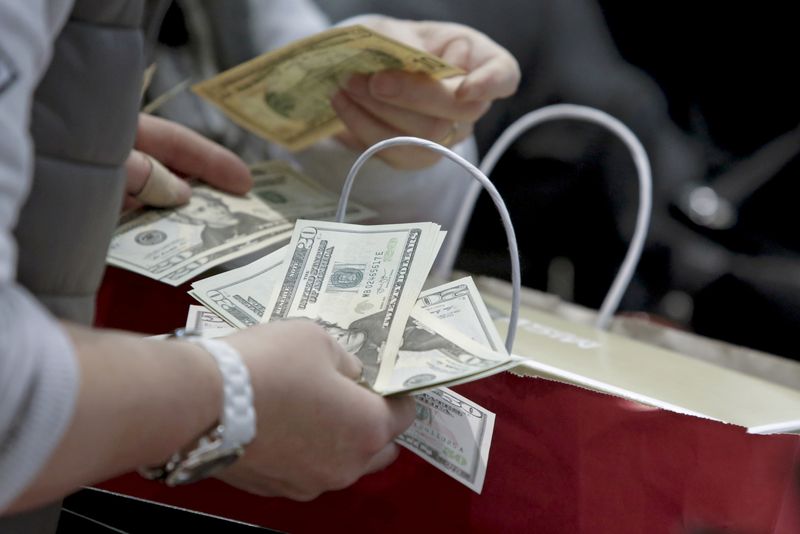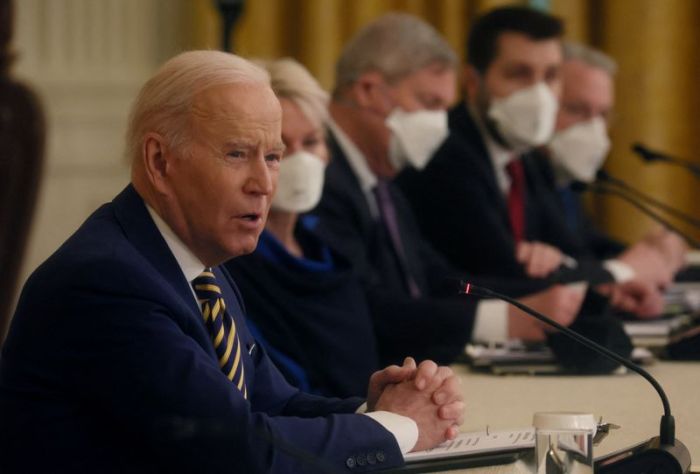NEW YORK (Reuters) – Low inflation had spoiled U.S. investors for so long that last year’s sudden surge came as a shock.
As those who lived through the late 1970s and early 1980s can attest, inflation can be a “portfolio killer” because it erodes purchasing power.
Inflation revved up to 7% in December compared to the year prior, the highest level in decades.
Even at 3% annual inflation, in 20 years you would need $181 to match what $100 buys today, according to the calculator at fintech site SmartAsset.
How does that change the money or asset mix you need for retirement?
“Many investors have never experienced inflation like we have seen the last few months, so it may be a good time to revisit your portfolio and confirm whether you still feel confident,” said Naveen Malwal, an institutional portfolio manager at Boston-based financial giant Fidelity Investments.
After all, some asset classes tend to perform better during higher-inflation periods. Among 15 major asset classes in inflationary periods since 2000, the top performers included oil (41% return), followed by emerging markets stocks (18%), gold (16%), and cyclical stocks (16%), according to a Wells Fargo study.
On the flip side were a couple of bond categories. Emerging markets fixed income lagged with -8% return, while investment-grade fixed income returned -5%.
Economists generally agree that inflation will back off from current overheated levels. Over the next 10 years, they expect the Consumer Price Index to average a modest 2.55% annually, according to the Survey of Professional Forecasters from the Federal Reserve Bank of Philadelphia.
“Look at the things driving inflation: There is too much money chasing too few goods,” said Scott Wren, senior global market strategist for Wells Fargo Investment Institute.
“There is money supply growth, there are transfer payments which increased savings, there is supply chain disruption. By the end of the year, we should see some easing, and all those things will help the inflation story.”
Which investment areas should benefit from rising prices, and which will not? Here is what the experts say:
ESCHEW CASH
During inflationary periods, the value of your cash holdings will erode over time, perhaps substantially so.
“Investors are sitting on way more cash than they should,” Wren said.
With indexes like the Nasdaq touching correction territory, now may be a good time to start putting that cash to use, and accumulate harder assets that should hold up during periods of higher inflation.
TIPS ARE YOUR FRIENDS
Fixed income markets tend to get hit hard by inflation. A bond paying out a rock-bottom yield for an extended period is a poor option when prices and interest rates are rising.
One corner of the bond market has the answer: Treasury Inflation-Protected Securities (TIPS), whose principal increases with inflation and throws off interest twice a year at a fixed rate.
“That’s one way to stay invested in the bond market, and they are literally designed to provide you inflation protection,” Malwal said.
LOOK AT HISTORY
Investing has no guarantees, but past performance during inflationary periods can provide some clues.
“In higher-inflation environments, things like commodities do well,” said Wells Fargo’s Wren. “So do mid-cap and small-cap stocks. The energy sector typically does well, and equity REITs (real estate investment trusts). I also think financials, industrials, and materials will all benefit.”
DO NOT OVERREACT
Just because inflation is uncomfortably high, do not expect that to last forever. Minor portfolio tweaks may be in order, but wholesale changes are probably a mistake.
Forecasters see inflation drifting down over 2022 as supply chain problems ease up, labor markets normalize, and COVID-related emergency cash infusions recede.
“Most people agree we’re headed lower. The question is how much lower and how long will it take to get there,” said Fidelity’s Malwal. “It could be closer to 3-4% by the end of the year.”
(Editing by Lauren Young and Richard Chang; Follow us @ReutersMoney or at http://www.reuters.com/finance/personal-finance.)


















